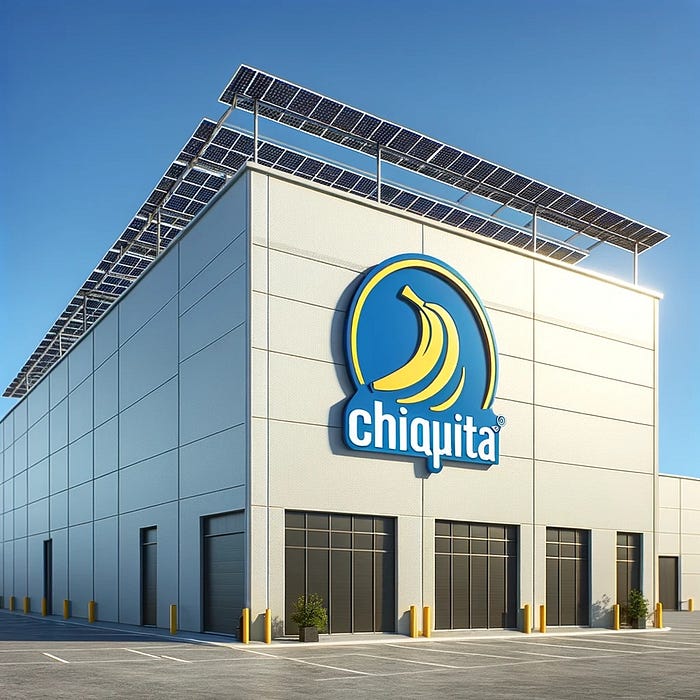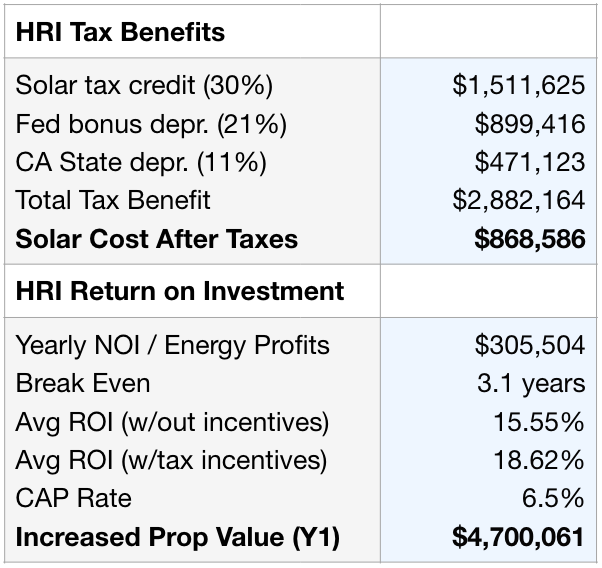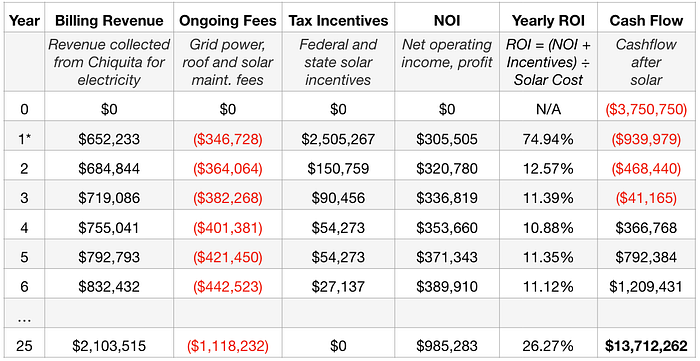The Value of Solar as a Commercial Real Estate Investment
By Alex ShahMay 21, 20244 min read
Investing in a commercial solar project offers three major benefits: a substantial federal tax credit, depreciation that can offset federal and state taxes, and a reliable income stream from the energy generated by the project. Let’s dive into each of these benefits.
When you invest $1 million in a solar project, you can receive a 40% federal tax credit upfront. This translates to a $400,000 credit against your tax bill, which you can apply either this year or in future years. It’s important to note that a tax credit is a dollar-for-dollar reduction in the amount of taxes you owe, making it significantly more valuable than a simple tax deduction.
Depreciation refers to the decrease in value of a physical asset over time, and it’s a “phantom loss” that you can deduct from your taxes. For solar projects, you can fully depreciate the cost of the project, minus half of the tax credit, over a span of five years. This can be applied to both federal and state taxes. For instance, if you’re investing in New York or California, this could result in approximately $300,000 in federal tax savings and $100,000 in state tax savings.
In addition to the tax benefits, a commercial solar project generates a steady income stream from the energy produced. This income is typically around 5% of your initial investment annually, amounting to $50,000 each year for the life of the project, which is generally about 20 years.
For a $1 million investment in a commercial solar project, here’s what you could get:
The combined benefits make solar a highly attractive investment option, providing substantial tax relief and a reliable income stream for decades.

Chiquita operates as a fruit producing company. The Company grows, procures, markets, and sells bananas, pineapples, and other fruits. Chiquita helps to create a positive impact by implementing the principles of sustainability in all its business practices under the “Behind the Blue Sticker” initiative.
HRI is a family owned real estate investment company, specializing in industrial real estate. HRI has also diversified into solar power. HRI currently owns and operates four solar farms that produce 5 megawatts of electricity.
In 2017 HRI built the world’s largest rooftop tracking solar system to power Chiquita’s cold storage facility which has approximately 400 refrigerator trucks on the property. This collaboration is a win-win for HRI and Chiquita.
HRI invested $5M in roof and solar upgrades. Solar allowed HRI to take advantage of tax credits and bonus depreciation, reducing the total after-tax investment to $2.2M: ~$1.3M for the roof repair and upgrade, and ~$900k for the 1.3MW solar system.




As seen above, break even occurs at 3.1 years. New building value can be estimated by taking the additional NOI ($305,505) and a cap rate of 6.5%, resulting in $4.7M in new building value.
“It was a no brainer. After the tax breaks, the solar system practically paid for itself, and we had a new warrantied and maintained roof and solar system. Energy311 has made our transition to solar on our tenant occupied buildings possible and profitable.” — Rob Ross, HRI.
Interested in learning more? Check out Energy311’s Blog!